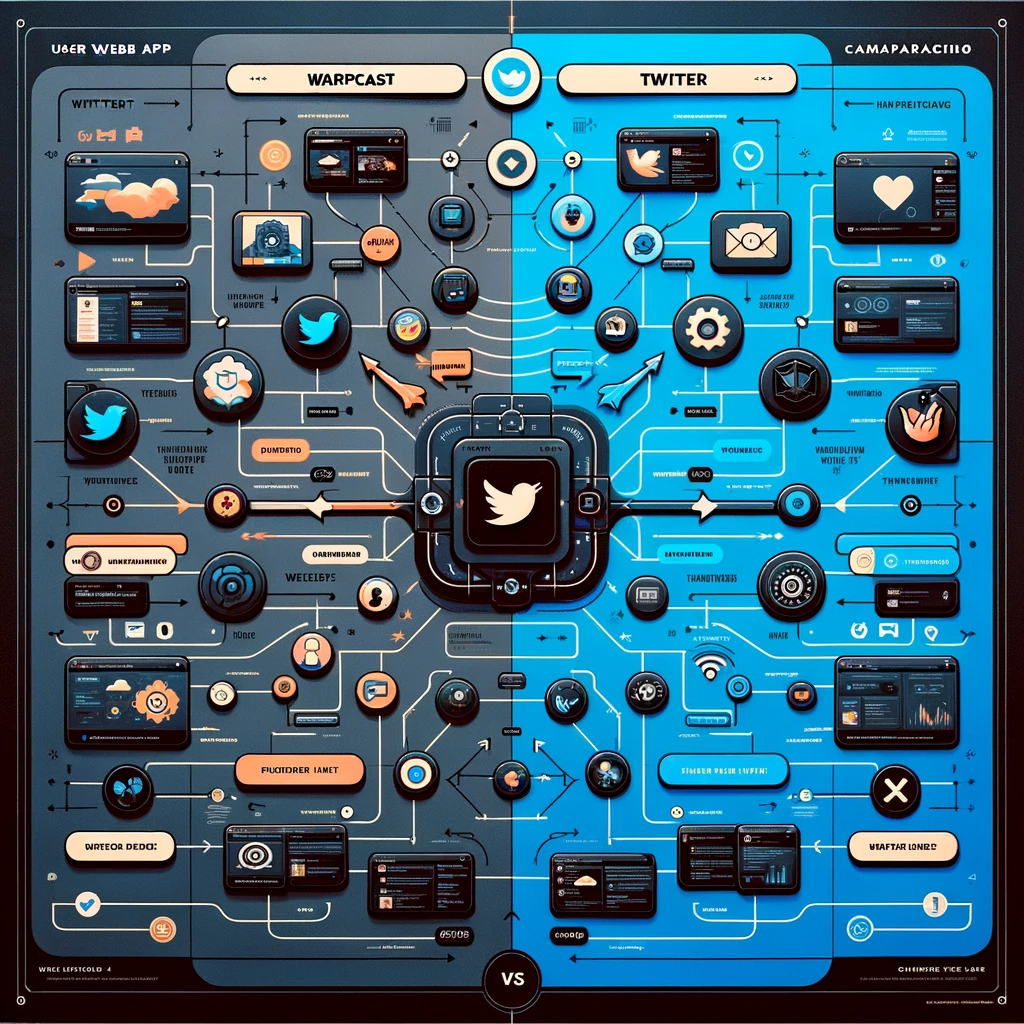Posted on February 1, 2024
Warpcast vs. X/Twitter: Redefining the Social Media Ecosystem
Introduction
In the fast-paced world of social media, Warpcast emerges as an intriguing alternative to the established norms set by Twitter/X. As a platform built on the decentralized Farcaster protocol, Warpcast promises a unique blend of innovation and user-centric design.
Understanding Warpcast
Warpcast is not just another social media platform; it’s a statement in the digital world. Built on the Farcaster protocol, it embraces decentralization, which stands in stark contrast to the centralized models of platforms like Twitter. This approach offers potential benefits like enhanced privacy, user autonomy, and resistance to censorship.

The Warpcast User Experience
The user experience on Warpcast is thoughtfully designed. Its Progressive Web App (PWA) brings a level of sophistication reminiscent of TweetDeck’s premium features but with added perks. This PWA allows for a seamless transition from browser to desktop, providing users with a more fluid and integrated experience.
Warpcast’s Progressive Web App
Warpcast’s PWA mirrors the functionality of TweetDeck’s premium offerings, delivering a more comprehensive and customizable user interface. This enables users to manage their social media interactions more effectively, with enhanced tools for content organization and exploration.
Innovative Features: Frames and Web3 Integration
Warpcast’s standout feature is ‘Frames,’ a revolutionary way to integrate Web3 into the social experience. Frames allow for a more interactive and dynamic way of content sharing, creating a sense of depth and immersion that is absent in traditional social media platforms.
Twitter: The Established Giant
Twitter has been a cornerstone in the realm of digital communication. Known for its brevity and real-time updates, it has become a go-to platform for news, entertainment, and social interaction. However, Twitter’s traditional model sometimes limits deeper user engagement and customization.
Twitter’s Strengths and Limitations
Twitter’s strength lies in its simplicity and widespread reach. However, its character limit, while iconic, can restrict in-depth discussions. Moreover, Twitter’s algorithm-driven feeds sometimes lead to echo chambers, lacking the personalization that a decentralized platform like Warpcast could potentially offer.

Comparing User Experiences
Comparing Warpcast and Twitter, the difference in user experience is noticeable. Warpcast’s approach, rooted in the principles of decentralization, offers a more personalized and user-driven experience. In contrast, Twitter, while efficient, can feel more restrictive and less adaptable to individual user needs.
Personalization and Control
Warpcast provides users with greater control over their social media environment, thanks to its decentralized nature. This means users can have a more tailored experience, potentially leading to a more satisfying and engaging interaction with the platform.
Community Building and Engagement
Both platforms offer unique approaches to community building and engagement. Twitter’s strength lies in its ability to quickly disseminate information and foster public discourse. Warpcast, on the other hand, could potentially create more niche and engaged communities, thanks to its innovative features and decentralized approach.
The Future of Social Media
As social media continues to evolve, platforms like Warpcast are at the forefront of this change. By leveraging the Farcaster protocol and focusing on features like Frames, Warpcast is not just offering an alternative to Twitter; it’s proposing a new vision for online interactions.
The Role of Decentralization in Social Media
Decentralization could play a key role in the future of social media. Platforms like Warpcast, which prioritize user autonomy and privacy, could pave the way for a more diversified and resilient social media landscape.
Conclusion
Warpcast stands as a fascinating counterpoint to Twitter, offering insights into what the future of social media might look like. Its emphasis on decentralization, enhanced user experience, and innovative features like Frames, positions it as a platform to watch in the coming years. As we continue to navigate the evolving digital landscape, the impact of platforms like Warpcast will undoubtedly be significant in shaping our online interactions and communities.

